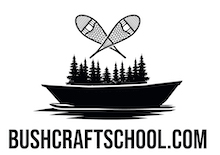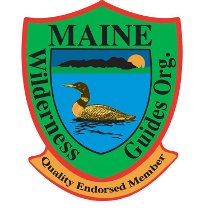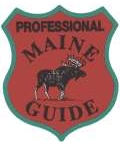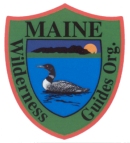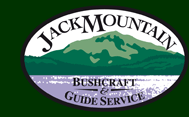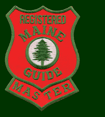Personal Kit
• Broken in footwear. Must be good for walking.
• Sandals or water shoes (can be old sneakers, but these dry slowly)
• Knee-high waterproof boots (rubber), great for when the water is cold.
• Sleeping Bag: rated to 20 degrees for the semester, can be warmer for the summer
• Sleeping Pad (foam pad or Thermarest)
• Tent – Be sure you set it up and stay in it a few times before arriving, and that it has noseeum netting
• 2 Tarps: No smaller than 10′ x 12′. This will be used in shelter construction. Bring an extra tarp to set up a dry spot to store your gear. We recommend these that allow light to come through, because dark tarps are depressing to live under, especially in cold weather. An added bonus is that they allow a covered shelter to act as a greenhouse, especially nice in cold weather. Clear UV Poly Tarps.
• Socks: several pair of warm ones
• Long Pants
• Underwear, T-Shirts, shorts, etc.
• Bathing Suit
• Other clothing that can get dirty and beat up.
• Towel
• Rain Gear, including rain pants (no ponchos allowed in canoes) – should be sized to fit over cold weather clothes
• PFD – Personal flotation device, also known as a life jacket. Get one sized to fit you. Range of motion is important when canoeing, so get one designed for paddling, not water skiing. Also, do NOT get the ones that inflate. On two separate occasions we’ve had students who had these, and they went off when we were doing canoe rescue exercises. On both occasions the student ended up injured and had to sit out a week of the course. Another strike agains them is that if they were to go off on day one of an extended trip, you would be essentially without a PFD for the remainder of the trip. Avoid these.
• Extra closed-cell foam pad (aka camping pad, sleeping pad) – For use as a pad when kneeling in the canoe.
• Warm winter hat (to wear when sleeping and late in the semester course)
• Hat with wide brim (for sun and rain protection)
• Sun Glasses (can’t learn to fly cast without them)
• Personal Toiletries, washcloth, biodegradable soap, etc.
• Head Lamp
• Cup for Hot/Cold drinks (unbreakable, travel mug-style)
• Plate, bowl, fork, spoon and net bag to hold them (similar to a laundry bag)
• Water Bottle with wide mouth(wide mouth to fill, not spill) – you should have enough water bottle capacity for a full day’s water
• Compass: We will be using these for navigation and making maps. There is no need to buy a fancy one, but some of the knock-offs (ie. Amazon recommends) have been so bad that they are non-functional. So we recommend a name brand, although it can be their least expensive option. Example: Suunto A-10
• Notebook and pen/pencil
• Cooler – For keeping perishable foods. We have no electricity or refrigeration at the field school. We have found that the 20-25 quart cooler size is good for 10-12 days for an individual. You should get this long before your course, pack a weeks-worth of food in it, and see how long the ice lasts. I personally have an RTIC 20 quart cooler, but there are many that work. Hard coolers also are great canoe seats, camp chairs, etc.
• Camp Chair – Not a necessity, but you’ll probably get tired of sitting on logs. Can fold or not, as you won’t have to transport it far. We use and recommend this folding wooden canoe & camp chair.
• Dry Storage For Your Gear When Canoeing. There are lots of options here. The best long-term option is a rigid container, such as this combination of 60 and 20 liter barrels from Recreational Barrel Works. The 60 liter holds your camping gear, the 20 liter holds your smaller items (camera, phone, notebook, etc.) and doubles as a canoe and camp seat. I have had great luck finding these 60L blue canoe barrels via craigslist for a fraction of the price when near an urban area. It might take some driving around, but do a search for ‘rain barrels’ and you will usually find someone who has a bunch of different plastic containers. You have to go and see them to make sure you are getting the right kind that have a waterproof seal, A few years ago I got a bunch of these for $15 each. Other options for dry storage include: canvas pack with waterproof liner, commercial dry bags, army duffel-type bag with waterproof liner, pack basket with liner, or any sack lined with a garbage bag. What you need is a way to keep things dry on canoe trips.
A five or six gallon plastic bucket with a Gamma Seal lid (lid that screws on tightly) is a great way to keep things from getting wet or crushed and functions as a camp seat on trips.
DON’T plan on putting a backpack in a trash bag; I’ve seen it 100 times and it NEVER works for more than a few hours. Read this article on the topic for answers to questions.
• Optional: Inexpensive Wool Blanket – past students have loved having these.
Technology Required For Digital Assessment System
• Battery that charges via USB. This one from RAVPower has worked well over the years.
• Tablet or Ipad that runs Google Docs.
• Bluetooth Keyboard (optional, but it is really challenging to type on a phone).
• Our system for using these is explained in this blog post. These items are required.
• Personal solar panel. Optional. You will be able to charge your battery via USB from one of our solar panels. These do not go into the field with us. For more information see the blog post linked above.
Cook Kit
• Cook pot with a bail handle Will be used for cooking food and boiling water in the field, so don’t get one that’s too small (because it’s a pain to boil drinking water a thimble at a time). The link below is to a pail that many have used with us over the years, but there are lots of options for an individual 2-quart pail.
• 2 quart stainless pails (the word ‘pail’ usually indicates that it has a bail handle). These are available from feed stores or Amazon, and are usually used for milking or for pets. They are less expensive than outdoor cook pots. A benefit to a pail over an outdoor cook pot is that they nest: small on the bottom, wide on top. This allows you to take several pots but only taking up the footprint of one. The other pots listed do not share this characteristic. This is important because you’ll be using your pot not only for cooking food, but also for purifying drinking water in the field (by boiling). Consider getting 2 or 3 of them. Another option is a 16 cm Zebra pot. Note that the downside to these is that that multiple pots will not nest.
• 2 quart pail.
Lids for these pails were a challenge to find for a number of years. These stainless 6″ pie plates fit them perfectly, and do double duty as a plate for eating food. They come in packages of 2.
• Stainless 6″ Pie Plate. These fit the pails perfectly and are used as pot lid, extra plate, etc.
• 1-quart stainless bowl for eating out of. This one nests with the pail and the pie lid. More about this bowl is in this blog post.
• Check out this short video on the Jack Mountain Pot System.
• Pot grabber. Useful for pouring, grabbing hot pot lids, etc. Fits inside pot for travel. MSR Pot Lifter. Update: After a recent look on Amazon to the linked MSR pot grabber, I saw that they now want over $20 for these. So don’t get the name brand, go for a knock off and spend less than $10. This one, Oilcamp Pot Lifter, is $6 from Ben’s Backwoods.
• 2 quart dutch dutch oven with a flanged lid, bail handle, no legs. Think of a dutch oven as a frying pan that you can hang over the fire or drop on top of the coals. We use them to bake bread, fry anything, make beans, etc. Check out this blog post with links to our updated recommendation for 2021. If you just want to get one, I have had good luck with this one from Stansport. At the time I’m writing this, it is $24. Amazon has a way of creeping up the price significantly over time, so if it is much more than this, contact us and we’ll take a look around. Also, please note that these things come pretty rough, and take some sanding to make them smooth and ready to use. For more information on this, check out the Foundations Of Outdoor Cooking online course at BushcraftSchool.com.
• Optional: Dutch oven lid lifter and lid holder. These allow you to lift the lid off of your dutch oven, and also give you a place to put the lid when you’re stirring, serving, etc. If you go for a legless dutch oven, these can also be your legs, meaning you can set the oven on this and surround the bottom with coals or charcoal to cook. A very useful, inexpensive item. The one linked to is sized to fit the smaller dutch ovens correctly.
• Thermal cooker and thermos. This will greatly simplify your life in camp by being able to slow cook beans and grains all day or overnight with no added inputs. Instead of simmering beans for 3 hours over an open fire, soak them overnight, boil them for ten minutes in the morning, put them in here, and they’re done at dinner time; Ozark Trail 1/2 Gallon Jug.
• Optional: 9″Paderno Bake Pan/Skillet from Ben’s Backwoods. (Alternate source, same pan from Bridge Kitchenware.) We’ve been using these for a few years and really like them. Made from carbon steel, they take a seasoning similar to cast iron. They fit perfectly in the reflector ovens we bring on the trail, and can double as a lightweight frying pan. If you want to get good at reflector oven baking, be sure to bring one of these – we supply the ovens, you bring your own pan.
Tool List
• Sharp Knife, fixed blade (non-folding) – We recommend the Morakniv #106, as well as the Frosts Mora #2 Carbon Steel. There are many options here.
• Match Case, waterproof – You should always have matches with you. These inexpensive match cases have increased their price 100% in recent years, but they are still only $2. Coghlan’s Match Case. There are lots of others that work just as well, including expensive milled aluminum, etc. Lighters also work, but you should always have something in your pocket to light a fire.
• Axe with Sturdy Leather Sheath (no hatchets) – handle should not be shorter than 25″. Contact Pole And Paddle Canoe for old, high-quality axes, draw knives and spoke shaves. If you get an axe from them, be sure to also order a sheath.
• Folding Bucksaw. Added for 2023. For why and the recommended saws, see this blog post.
• 2 Files (mill bastard, flat), 6 inches long. Something like this. We use these to keep axes sharp. If you get a second one, you can make a crooked knife out of it.
• Draw Knife. Will be used for woodworking. Don’t get the ‘Timber Tough’ draw knives from Amazon; cheap but bad! The steel is terrible, and you’ll have to spend 5 hours reconfiguring the blade and sharpening with a file.
• Spoke Shave
• Farrier’s Rasp
• Plastic Bin – for storing personal items and keeping them dry. Like this or similar.
Book List
Check out our book list for what you need for your course. Book List.
Optional Gear
• Pump-up solar shower. We’ve used one of these for 5 years and it’s a huge step up from hanging bag solar showers. It gets hot in the sun, is easy to pour hot water into, and parts are easy to replace. Hot water for showers and washing dishes. A huge luxury for base camping and car camping. Super useful to leave on shore when sea kayaking as well. Other bathing options are a hanging sun shower (crappy, they rarely last more than a month) and a cook pot and wash cloth (always works). If you want to shower every day and price is no object, look at the Zodi shower (we’ve never used it but it gets good reviews).
• Fishing Gear
• Bug Net – nice to have when the mosquitos and black flies are out
• Lantern – These provide light and heat for your shelter. One of our instructors swears by this style by LuminAid.
• Thick, open-cell foam pad – can make a stick bed the pinnacle of luxury
• Camera
• Small propane or backpacking stove for individual use.
• Canoe paddle and/or pole. You’ll be carving one, but helpful as a backup.
• Cell Phone
• Canoe or Kayak
• Bicycle – It is 1 mile from Moose Vegas to the Athenaeum and we’re 7.5 miles from Ashland.
We provide canoes and you’ll be carving a paddle. As for boats, our home base is on the Aroostook River. If you have a boat that you enjoy paddling, feel free to bring it.

